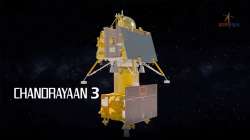What happened with Chandrayaan-2? What went wrong with it? Here's all you need to know
With the successful preparatory tests, ISRO is optimistic about the upcoming launch of Chandrayaan 3 which is scheduled to take place on July 14 at 2.35 PM (IST).

The Indian Space Research Organisation (ISRO) is gearing up to launch Chandrayaan 3, the next edition of India's moon mission. This comes after the setback of Chandrayaan 2, which lost contact with ISRO due to a technical glitch. To avoid repeating the same errors, ISRO has conducted successful preparatory tests and is now scheduled to launch Chandrayaan 3 on July 14.
Chandrayaan 2 was launched on September 7, 2019, but encountered problems when Vikram lander, which was supposed to make contact with the moon, tilted unexpectedly during descent. Eventually, ISRO lost all communication with the lander when it was just 400 meters away from the lunar surface.
ALSO READ: Chandrayaan-3: How to watch the live launch and know more
The objective of the Chandrayaan 2 mission was to achieve a soft landing on the moon, a feat accomplished by only the United States, China, and Russia. However, the change in trajectory and failure to reduce speed led to the lander and the moon rover Pragyan crashing onto the lunar surface, resulting in the loss of contact.
ISRO has learned from the Chandrayaan 2 mission and is determined to avoid similar setbacks with Chandrayaan 3. The upcoming mission aims to rectify the mistakes and achieve a successful landing on the moon. Scientists have diligently worked to address the software glitch that caused the loss of contact during the previous mission.
ALSO READ: Android 14 Beta 4 release: New 'auto-confirm unlock' feature and fixes in latest update
Chandrayaan 3 differs from Chandrayaan 2 in a couple of significant ways. Firstly, Chandrayaan 3 will not include a rover like its predecessor. The focus of the new moon mission is primarily on other aspects of exploration.
In addition, Chandrayaan 3 will carry a payload called Spectro-polarimetry of HAbitable Planet Earth (SHAPE), which was not present in the previous mission. SHAPE will be responsible for conducting spectral and polarimetric measurements of Earth from lunar orbit. This addition is expected to enhance the mission's capabilities and reduce the likelihood of losing contact with ISRO or experiencing trajectory deviations that were encountered in the previous mission to the moon.
